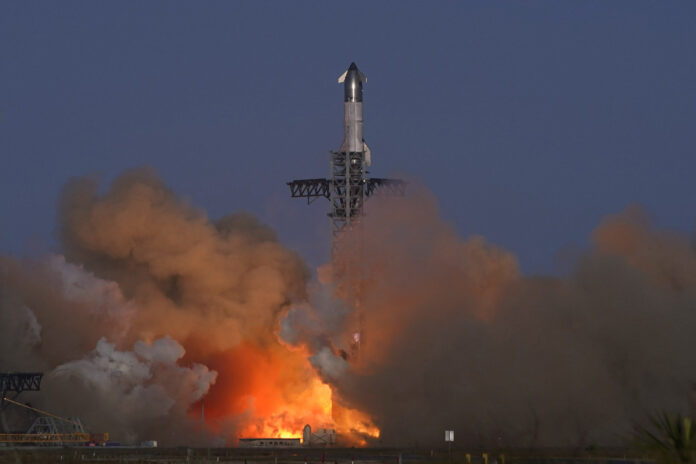Elon Musk’s space firm stands to gain financially and the time it takes for humans to reach Mars might be significantly shortened if NASA decides to send rockets to the red planet next year.
The abrupt change is in response to the White House’s proposed budget for 2026, which provides $1 billion more for Mars-related initiatives and would cover the costs of the launches. The fact that the Trump administration has made sending humans to Mars a top priority is another indication of this.
Launch windows between 2026 and 2028 are being considered, among other opportunities, to test technology that might one day allow people to set foot on Mars, according to NASA spokesperson Bethany Stevens.
Following a meeting between Trump and Italian Prime Minister Giorgia Meloni last month, the White House released a statement that first hinted at the prospect. It suggested a Mars mission partnership between the US and Italy as early as next year.
The Mars endeavor was not communicated to NASA personnel, who are typically aware of such plans, before the White House meeting, according to a senior official who was allowed anonymity to discuss internal affairs.
The missions may be very beneficial to Musk’s SpaceX, which is probably going to be one of the main contenders to provide the rocket. Only SpaceX has declared intentions to land a rocket on Mars in 2026, even though other firms also possess rockets with the capability to reach Mars.
The Trump administration’s growing interest in Mars is in line with NASA’s new focus. A pledge to send a human being to the moon was made by Trump during his inaugural address. Even in his evidence leading up to his nomination hearing, NASA administrator candidate Jared Isaacman stated that he would “prioritize” a mission like this. Musk, who is an advisor to Trump, has long advocated for sending humans to Mars rather than the moon.
Legislators have formally ordered NASA to seek a permanent human presence on or around the moon, so a Mars focus might cause friction with them.
If senators are concerned that this endeavor may postpone lunar ambitions, they may rebel against Trump and reject the funds he requested in his budget. Despite widespread support in the Senate, the Gateway lunar space station program is slated for cancellation in the White House’s proposed budget.
Isaacman has stated that the space agency may simultaneously pursue plans for the moon and Mars. Senators Cruz (R-Texas) and Cantwell (D-Wash.), who are in charge of the Senate committee that oversees NASA, questioned Isaacman in writing about that claim after his confirmation hearing.
No one from the White House, SpaceX, Cruz, or Cantwell could be reached for comment.
The best years to launch missions are next year and 2028 since that is the furthest time period in which Earth and Mars will be in orbit around one other.
SpaceX’s Starship isn’t the sole ship in the running for the voyage. The New Glenn rocket, developed by Blue Origin, made its first launch in January and has the potential to send a small cargo to Mars. The business has an existing agreement to investigate Mars by sending two tiny satellites there either this year or the year after. United Launch Alliance rockets have been developed for use in Mars missions as well.
Before setting sail for Mars, Starship must first pass a battery of rigorous technological tests. Explosions terminated the rocket’s previous two launches.
